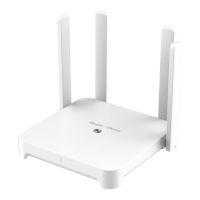Web-based Configuration Guide AP Management
109
4.7 Configuring AP Load Balancing
4.7.1 Overview
The AP load balancing function is used to balance the load of APs in the wireless network. When APs are added
to a load balancing group, clients will automatically associate with the APs with light load when the APs in the
group are not load balanced. AP load balancing supports two modes:
Client Load Balancing: The load is balanced according to the number of associated clients. When a large
number of clients have been associated with an AP and the count difference to the AP with the lightest load
has reached the specified value, the client can only associate with another AP in the group.
Traffic Load Balancing: The load is balanced according to the traffic on the APs. When the traffic on an AP is
large and the traffic difference to the AP with the lightest load has reached the specified value, the client can
only associate with another AP in the group.
Example: Add AP1 and AP2 into a group and select client load balancing. Set both the client count threshold and
difference to 3. AP1 is associated with 5 clients and AP2 is associated with 2 clients, triggering load balancing.
New clients' attempt to associate to AP1 will be denied, and therefore they can associate only with AP2.
After a client request is denied by an AP and it fails to associate with another AP in the group, the client will keep
trying to associate with this AP. If the client attempts reach the specified value, the AP will permit connection of
this client, ensuring that the user can normally access the Internet.
4.7.2 Configuring Client Load Balancing
Choose Network > Wi-Fi > Load Balancing.
Click Add. In the dialog box that appears, set Type to Client Load Balancing, and configure Group Name,
Members, and Rule.

